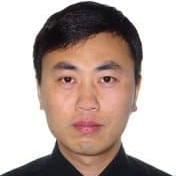Advances in Porous Materials: Synthesis, Characterisations and Applications (2nd Editon)
A special issue of Materials (ISSN 1996-1944). This special issue belongs to the section "Porous Materials".
Deadline for manuscript submissions: 20 October 2024 | Viewed by 765

Special Issue Editors
Interests: catalysis; nanoporous materials; noble metal nanomaterials; cancer therapy
Special Issues, Collections and Topics in MDPI journals
Interests: porous materials; energy storage and conversion; dealloying; metallic glass; high entropy alloy; battery; light metals
Special Issues, Collections and Topics in MDPI journals
Interests: catalysis; sensing; piezoelectric; nano–bio interaction
Special Issues, Collections and Topics in MDPI journals
Special Issue Information
Dear Colleagues,
Porous materials have shown great potential in catalysis, biosensor and biomedical, energy storage and conversion, aerospace, and architecture applications owing to their high surface area, low density, and high specific strength. Porous materials have the structural feature of continuous interconnected porosity, which benefits the transport of electrons, ions, and mass. The chemical compositions of porous materials are well-controlled and diversified and include metals, ceramics, and carbon-based materials. As a result, the development of porous materials is quickly becoming important. An increasing number of researchers are working from different perspectives to conduct fundamental research on various applications.
This Special Issue focuses on recent advances in various porous materials. Research areas include but are not limited to novel synthetic strategies, advanced characterization skills, theoretical calculation methods, and various applications. We encourage you to submit a manuscript to this Special Issue. Original research papers and review articles are welcome. We look forward to receiving your contributions.
Dr. Weiqing Zhang
Prof. Dr. Zhifeng Wang
Dr. Yichao Wang
Guest Editors
Manuscript Submission Information
Manuscripts should be submitted online at www.mdpi.com by registering and logging in to this website. Once you are registered, click here to go to the submission form. Manuscripts can be submitted until the deadline. All submissions that pass pre-check are peer-reviewed. Accepted papers will be published continuously in the journal (as soon as accepted) and will be listed together on the special issue website. Research articles, review articles as well as short communications are invited. For planned papers, a title and short abstract (about 100 words) can be sent to the Editorial Office for announcement on this website.
Submitted manuscripts should not have been published previously, nor be under consideration for publication elsewhere (except conference proceedings papers). All manuscripts are thoroughly refereed through a single-blind peer-review process. A guide for authors and other relevant information for submission of manuscripts is available on the Instructions for Authors page. Materials is an international peer-reviewed open access semimonthly journal published by MDPI.
Please visit the Instructions for Authors page before submitting a manuscript. The Article Processing Charge (APC) for publication in this open access journal is 2600 CHF (Swiss Francs). Submitted papers should be well formatted and use good English. Authors may use MDPI's English editing service prior to publication or during author revisions.
Keywords
- porous metals
- metallic foam
- carbon
- dealloying
- mechanical property
- energy storage and conversion
- catalysis
- actuation
- calculation and simulation








